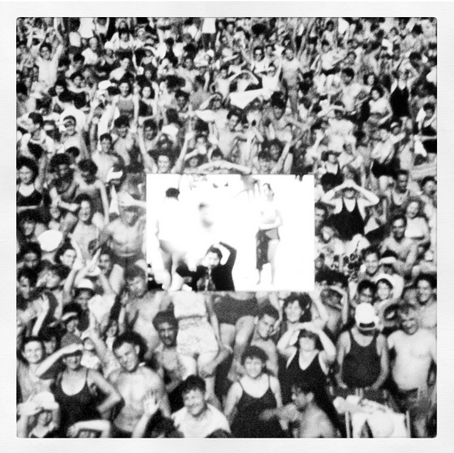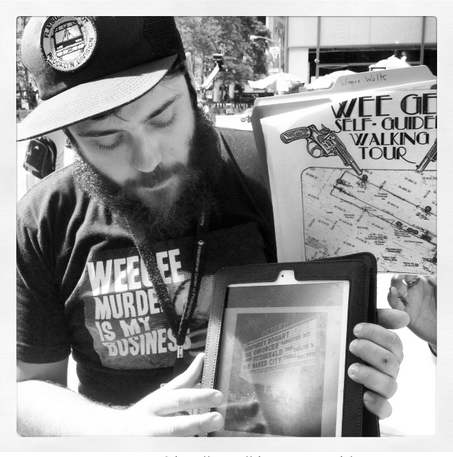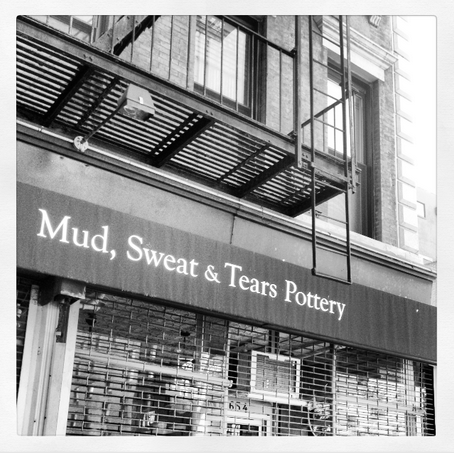NYC’s Forgotten ‘War on Christmas Trees’
Discover how an obscure holiday crackdown affects festive street vendors today!


Early on a Sunday morning, about 15 people gathered at the International Center of Photography (ICP) for a walking tour about the life of New York photographer, Arthur Fellig, better known as Weegee. The ICP is currently presenting a traveling exhibit, entitled Murder Is My Business, that chronicles his decades-long career.
An immigrant from Ukraine, Weegee was most famous for his photographs of crime scenes in New York in the 1930s and ’40s. Although he claimed that his nickname, Weegee, was a phonetic rendering of Ouija and derived from his uncanny ability to show up minutes after the crime, he was called Weegee because of his early job as a “squeegee” boy in the darkroom.
Weegee’s career is filled with these kinds of quirky details. Even until his late twenties, he did not find success as a photographer. Sometime in his thirties however, Weegee decided that he would be a famous photographer, and began to sign his photographs with a stamp that read, “Weegee the Famous”, even before he was well known. He would also pose in his own photographs either as a bystander or a member of the police, and the photographs would be published without the newspaper editors realizing it. Weegee’s sensational myth-building was what made his work all the more intriguing.
 A mock-up of one of Weegee’s exhibitions
A mock-up of one of Weegee’s exhibitions
 Weegee made films as well, such as this one on Coney Island, although they were not commercially successful
Weegee made films as well, such as this one on Coney Island, although they were not commercially successful
Throughout his career, Weegee never lost his sense of wonder at New York. He would often go to places like Coney Island, which he felt was a magical place, and soon progressed from photographing crime scenes to focusing on capturing the essence of New York City. His famous work, Naked City, does just that, and was what shot him to prominence.
 Ben, our friendly walking tour guide
Ben, our friendly walking tour guide
After a tour of the comprehensive exhibit, our guide, Ben, took us on a walking tour of the nearby areas which Weegee liked to frequent. Our first stop was Times Square, which Weegee loved. A seedy area littered with theatres and prostitution joints until two decades ago, it was also a spot where a lot of crimes and fires occurred. Weegee had established close friendships with many of the night duty policemen in New York, and was the only photographer allowed to have a police radio, which alerted him to crimes as they were reported. For a photographer with no family and not much of a social life, this was the perfect way to spend the time. Weegee would often lay in bed all night until something interesting came up, after which he’d rush to the scene. In the morning, Weegee would be the first photographer at the newspaper, and started getting his work published through sheer will and good timing.
Many of his photographs concentrated on the humanity and narrative of the scene, rather than simply newspaper reporting. He used flashbulbs to light the scene for the black and white garish quality and experimented with 4×5, 16mm and 35mm cameras. His work gained popularity in Europe as well, which praised it for its film noir quality.
We later moved to Duffy Square, where Weegee took many shots early in the morning, and Hell’s Kitchen, where there was a lot of violent gang warfare. The walking tour not only provided details into Weegee’s life, but also included information about New York’s history, such as the old Hell’s Kitchen and Times Square’s big media influence.
 The scene today, with The Spot replaced by a pottery store.
The scene today, with The Spot replaced by a pottery store.
Weegee achieved significant fame in the last two decades of his life and settled in a nearby apartment near Times Square. In his later years, he suffered from diabetes, and Wilma Wilcox moved in with him to be his primary caretaker. After his passing, she donated many of his materials, including old invoices and personal items. Many of them are on display at the ICP, where they are working on digitizing the information. One ICP employee even started a blog dedicated to Weegee, which can be found here.
This is the last week that the exhibition is showing at the ICP, so be sure to head there for an insight into one of New York’s most intriguing photographers. Click here for more information on the exhibition.
International Center of Photography
1133 Avenue of the Americas (at 43rd Street)
Get in touch with the author @psxcharmaine
Subscribe to our newsletter